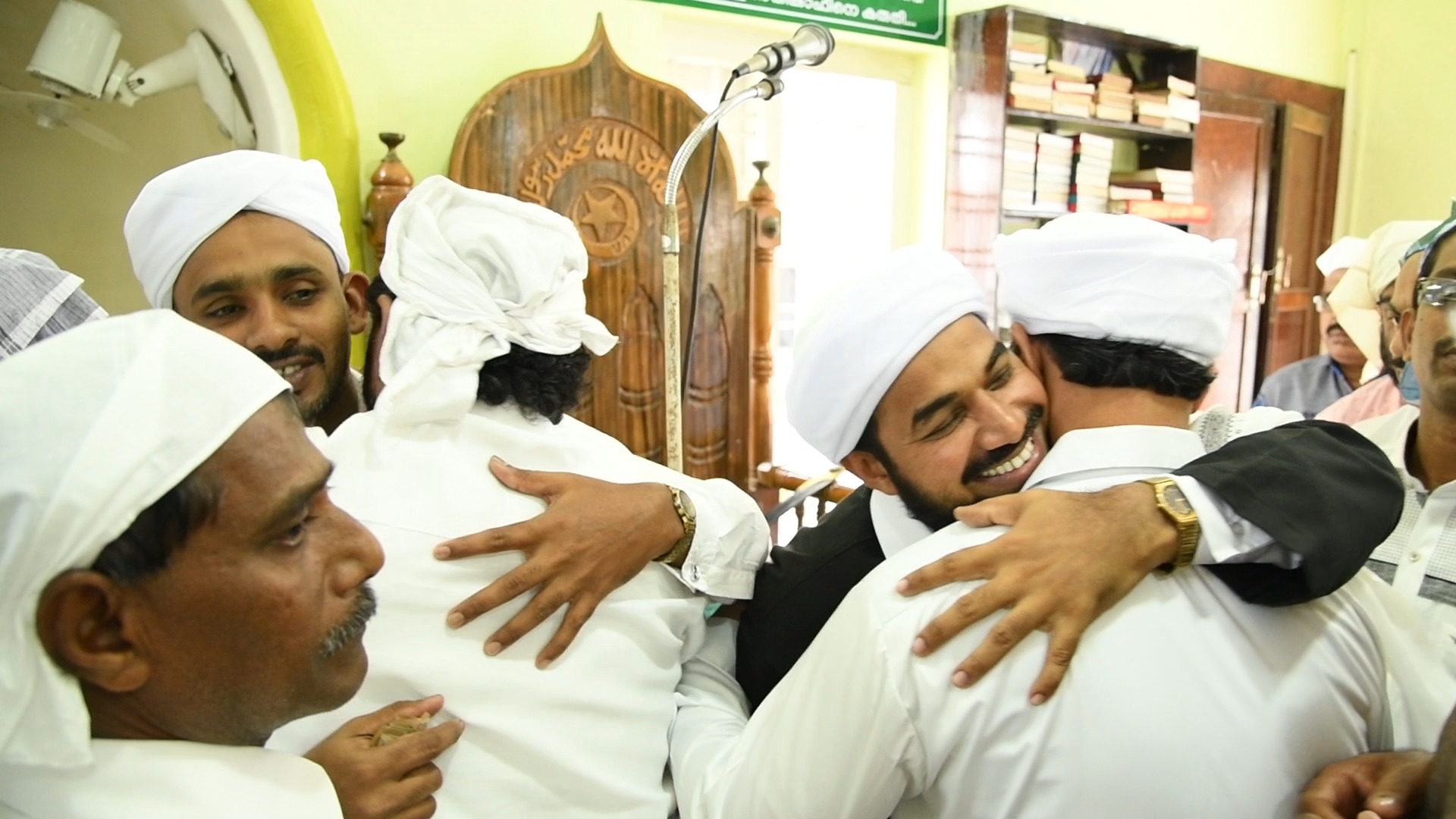Moon Light
See the Latest from our
video Columns
In Moon Light
Emerging Indian Photographer
Biju Ibrahim
Shares a slice of
his journeys and experiences as
moving image anecdotes
Hookah: Moosharis’ Muse | Moon Light © Biju Ibrahim / Photo Mail
Koyilandy, the small fishing town on the west coast of India, boasts the largest fishing harbor in Asia. That’s not all. This town on the Malabar Coast is famous for its intricately designed metal Hookahs.
A hookah also known as the qalyān or shisha, is a single- or multi-stemmed instrument for heating or vaporizing and then smoking either tobacco, flavored tobacco (often Mu‘assel), or sometimes cannabis, hashish, and in the past opium. The smoke is passed through a water basin – often glass-based – before inhalation. Once, the traditional metal workers made and exported hookahs extensively and were popularly known as Malabar or Koyilandy Hookahs. Today these intricate hookahs are difficult to find outside Koyilandy and are becoming difficult even to find in Koyilandy itself. But, there are a few families who continue to make these Hookahs.
Peek into the Past
The concept of hookah is thought to have originated in medieval India. There are two theories regarding the origin of the hookah. The first is that following the introduction of tobacco to medieval India by the Jesuits, and since then tobacco use became widespread. The hookah or waterpipe was invented by Abu’l-Fath Gilani, a Persian physician of Akbar, in the Indian city of Fatehpur Sikri during Mughal India; the hookah spread from the Indian subcontinent to Persia first, where the mechanism was modified to its current shape, and then to the Near East. Alternatively, it could have originated in the Safavid dynasty of Persia, from where it eventually spread to the Indian subcontinent.
The Hookahs of ancient times were very simple, rugged, and archaic in design. The initial Hookahs were crafted out of a coconut shell base. In the 17th century, Hookah became a part of Persian culture where strong, dark leaf tobacco called Ajami was used. Craftsmen took pride in the aesthetics and redefined the look of the pipe through woodworking. For the first time, Hookah became accessible to everyone and the industry of hookah servants emerged. Even the Shah at the time had his servants for hookah.
Hookah migrated into Turkish culture and during the 18th century, it continued to blossom through means of more innovation. The dated look of the Hookah was phased out as blacksmiths began casting intricate brass designs and adorned the pipe with royal and religious markings. To enhance the aesthetic appeal, mosaics and elaborate paintings were added. Hookah was prominent in Turkish high society and was a true symbol of status. It was smoked after royal dinners and at diplomatic meetings. Offering a hookah to a guest became an important sign of trust and withholding it could be taken as a serious insult.
The Hookah tradition spread into the Middle East throughout the 19th century. In Egypt, traditional forms of tobacco seen prior were reformulated into Mu’Assel by mixing honey or molasses with the tobacco. Hookah integrated into society so deeply in these parts that hookah cafes were built to house the ever-growing popularity. Hookah promoted a community amongst the patrons, uniting all classes, races, and genders alike. It was used as a way for people to relax, socialize and strengthen bonds with one another.
The Making
The process of making hookah is a tedious one. Here, the metal artisans who are involved in the art of metal making are considered part of the Vishwakarma community. The community comprises five sub-groups – carpenters, blacksmiths, bronze smiths, goldsmiths, and stonemasons. The mud crucible, which is used to heat the metal is called moosha, and therefore the artisans go by the name of Moosharis. The Moosharis make a replica of the Hookah from wax and then coated with clay. The molten metal poured into molds is then taken out of the furnace to cool it down. After the clay residue is rubbed off the casted pieces of metal, the Moosharis work on the detailing aspect to crafting exquisitely beautiful Hookahs of various styles.
The Thorns
Today, instead of copper and brass, manufacturers increasingly use stainless steel and Aluminum. Silicone rubber compounds are used for hookah hoses instead of leather and wire. New materials make modern hookahs more durable, eliminate odors while smoking and allow washing without risks of corrosion or bacterial decay. New technologies and modern design trends are changing the appearance of hookahs. However, a few families in Koilandy, continue to involve in the art of making Hookahs.
In recent times, there has been a re-emergence of this tradition and café have been started in metros such as Bangalore. The health effects of smoking Hookah apart, its use from ancient times in India was not only a custom but a matter of prestige. It centers on conversations and promotes more connectedness among those participating. Its gesture is more than an entertaining social activity or means to relax, it’s a way that families, relatives, friends, and business associates in these cultures provide hospitality and strengthen bonds with one another.

Biju Ibrahim born in Kerala is an emerging photographer and Documentary Film Maker. Biju is interested in mysticism, politics, and history. His works have been published in various national magazines. He has been part of several projects, including EtP’s Public Photo-Art Project 365 Tiruvannamalai 2014-15, Artist in Residence of Uru Art Harbour 2016, Serendipity Arts Festival: The Young Subcontinent Project 2017, and Kochi Muziris Biennale 2018.
Published on March 16, 2021
See All Videos | Moving Images
Share
Related Videos
Ravum Pakalum | MoonLight | Biju Ibrahim
There are two official celebrations in Islam, Eid al-Fitr and Eid al-Adha. Both holidays occur on dates in the lunar Islamic calendar, which is different from the solar based Gregorian calendar, so they are observed on different Gregorian dates every year. There are a number of other days of note and festivals, some common to all Muslims, other specific to Shia Islam as a whole or branches thereof.
Kuthratib, ritual performance in Kondotty, Kerala
Kuthratib ritual is annually performed at the Kondotty Dargah dedicated to Veliya Muhammed Shah Thangal. Every year, during the memorial day of Shah Thangal, byths are sung from the morning, Kutratib ritual is conducted through the night. This ritual was led by Ustad Avaran Mullakal in the year 2016.


